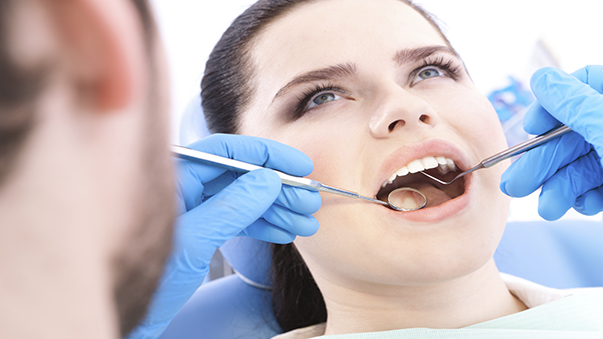Emergency Tips
Any kind of tooth damage — broken dentures, lost crowns or fillings, or a broken tooth — should be taken care of immediately.
Our goal is to keep you smiling and to keep your smile in its best shape.
Begin by cleaning around the sore tooth meticulously. Using warm salt water, rinse the mouth to displace any food trapped between teeth. Under no circumstances should you use aspirin on the aching tooth or on the gum. In the event of facial swelling, apply a cold compress to the area. For temporary pain relief, acetaminophen is recommended. Please contact us for an appointment if the pain persists more than a day.
Rinse the area with warm water. Put a cold compress over the facial area of the injury. Recover any broken tooth fragments. Seek immediate dental attention.
Recover the tooth, making sure to hold it by the crown (top) and not the root. Rinse, but do not clean or handle the tooth more than necessary. Reinsert the tooth in the socket, and hold it in place using a clean piece of gauze or cloth. If the tooth cannot be reinserted, carry it in a cup containing milk or water. Because time is essential, see a dentist immediately.
Remove a broken appliance only if it comes out easily. If it is lodged or painful to remove, cover any protruding edges with wax, cotton balls, gauze or chewing gum. Do not remove any wire caught in the gums, cheek or tongue. See a dentist immediately. Emergency attention is usually not required for loose or broken appliances that cause no discomfort.
Ice can be applied to any bruised areas. For bleeding, apply firm (but gentle) pressure with sterile gauze or a clean cloth. If the bleeding does not stop with pressure or continues after 15 minutes, go to an emergency room.
Over-the-counter medications will usually provide temporary relief. If sores persist, visit your dentist.
Ice can be applied to any bruised areas. For bleeding, apply firm (but gentle) pressure with sterile gauze or a clean cloth. If the bleeding does not stop with pressure or continues after 15 minutes, go to an emergency room.
Fold a piece of gauze and place it (tightly) over the bleeding area. Bite down on the gauze for 15 minutes. If bleeding continues, see a dentist.
In the event of jaw injury, tie the mouth closed with a towel, tie or handkerchief. Go immediately to an emergency room.
Periodontics

Periodontal simply means “the tissue around the teeth.” Periodontists specialize in the treatment and surgery of this area, which is often characterized by gum disease. Plaque is the most common element causing gum disease.
Unfortunately, periodontal-related problems are often discovered after they have persisted for an extended period of time. Proper oral hygiene, daily dental care and regular dental check-ups will minimize the risk of gum disease. Gum disease ranges from mild (gingivitis) to moderate to the severe (periodontitis). Treatments are available for every case of gum disease.
- “Long” teeth (receding gum lines expose the root portions of your teeth)
- Discolored or deteriorating tooth structure
- Gum depressions (holes in between the teeth in the gum tissue)
- Tooth loss or tooth movement
- Infected gum line (discoloration or inflammation of the gum tissue)
- Damaging to your dental health
